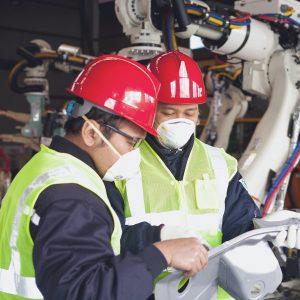A resilient return for Asia’s manufacturing and supply chains?
By Didier Chenneveau, Matteo Mancini, and Sahil Shinghal
Asia shows an early glimpse of how manufacturing and supply-chain leaders are responding to disruption caused by the pandemic.
The Asia-Pacific region is at widely varying points on its journey through the COVID-19 pandemic. China is broadly beginning to restart its operations amid recovering domestic demand, while other geographies, such as Southeast Asia, Japan, and South Korea, are still tackling cases and under a range of control measures to help stop the spread.

To understand the differing sentiment and responses among manufacturing leaders across the whole region, we surveyed more than 200 manufacturing and supply-chain leaders across industries including advanced industries; consumer goods; chemicals; metals and mining; oil and gas; construction, engineering and infrastructure; and transportation and logistics.
Recovery is coming, but isn’t here yet
Overall, 39 percent of respondents are confident that the manufacturing sector will recover rapidly from disruptions caused by COVID-19, estimating that as little as two to three months will be sufficient. However, 61 percent expect that recovery will take at least six months.
Once we looked at responses split by subregions across Asia Pacific—Australia and New Zealand; China; Japan and South Korea; South Asia; and Southeast Asia—we saw that optimism closely aligns with the stage of progression through the pandemic timeline.
Nearly half of respondents in China expect rapid recovery, possibly because the country is further along the timeline in its pandemic response.
Responses from Southeast Asia, Japan, and South Korea, on the other hand, report markedly lower confidence in a swift recovery.
The majority of these regions are still tackling cases and only just beginning to ease lockdown measures—South Korea is currently preparing to slowly and cautiously proceed to the next normal under “everyday quarantine” measures. Japan’s lack of confidence is worth noting, as the country has a wealth of experience managing natural disasters and boasts a manufacturing sector that is well-versed in responding to and recovering from them.
Nevertheless, the dynamic nature of COVID-19 appears to have challenged the Japanese manufacturing sector.
Despite the relative success of Australia and New Zealand in controlling the spread of COVID-19—at this writing, the two countries’ incidence rates are both less than one-tenth of rates seen in Western European and North America—almost 20 percent of respondents from Australia and New Zealand expect manufacturing operations to take longer than 12 months to recover.
In Australia, this negative sentiment may be due to its manufacturing profile which is largely focused on the hardest hit primary industries.
The impact of COVID-19 is being felt across industries
Five common challenges are identified by leaders across industries: material shortages; drop in demand; worker shortages; cash-flow issues; and planning issues.
- Advanced industries are most affected by material shortages, primarily due to interconnected supply chains spanning multiple geographies. For example, a respondent from an auto company in Southeast Asia commented, “We are facing raw-material shortages from tier-2 companies, including aluminum and imported chemicals.”
- The biggest impact on consumer-facing companies is decreased demand, particularly in discretionary categories such as apparel, fashion, luxury goods, skincare, and cosmetics, where demand has dropped significantly during the pandemic.
- Labor-intensive industries are suffering the most from worker shortages, many of which are due to restrictions on workplace capacity and physical-distancing measures. This challenge is expected to resolve independently as restrictions are lifted and more employees are able to return to the workplace.
Demand volatility is causing issues for planning, with many leaders reporting that they are finding it challenging to trigger new orders because they cannot make accurate demand forecasts.
Leaders also reported cash-flow issues—both on their own part and across their multitier supplier chains.
Additionally, our research reveals some examples of automotive original equipment manufacturers (OEMs) partnering with other organizations to jointly manage risks for suppliers.
For example, a leading auto OEM provided a lower commercial discount rate and multichannel financing support to its suppliers.
Digital options can also help. While many of the top challenges faced by each industry seem to be influenced by their specific external situations, there is an opportunity across sectors for companies to leverage their data to create transparency and better address short- and medium-term demand and supply-chain implications.
In this way, companies can minimise disruptions and optimise cost.



